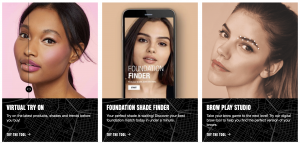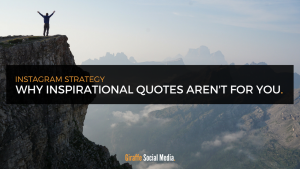Plus, will Facebook do a Clubhouse thing?
Marketing Land’s daily brief features daily insights, news, tips, and essential bits of wisdom for today’s digital marketer. If you would like to read this before the rest of the internet does, sign up here to get it delivered to your inbox daily.
Good morning, Marketers, and what’s your ETA?
No, I don’t mean what time will you show up? I’m talking about Enterprise Technology Adoption profiles, an intriguing concept Gartner has been developing, and which is probably ready for the spotlight. The idea is apparently (loosely) related to personality inventories in psychology, and purports to categorize purchases of technology in a more refined and data-supported way than personas — or firmographics, if you’re dealing with buying teams or accounts.
Gartner’s research surfaces the most and least important criteria for enterprise buyers when it comes to purchasing technology. Unsurprisingly (I’d say), compatibility with existing systems is paramount; but also that the vendor has good service and support capabilities, and unexpectedly that the vendor is importing successful innovations from other industries to the buyer’s own space. Less important? Cost, whether the vendor is a market leader, and shortest time to results.
Then come the specifics of ETA types. I’ll give two examples: FIDs. Those are Flexible, IT-led, Dynamic adopters. SBMs are Strict, Business-led, Measured. There are many others. Is this complexity for the sake of it, or is it going to add a valuable layer of detail telling vendors how to target accounts?
Kim Davis
Editorial Director
Marketers: Let pictures tell your story
Look at a picture. You probably comprehended the image in about one-tenth of a second, far less time than it took you to read this sentence. Your brain processed that image 60,000 times faster than it did for text. And your mind can process 36,000 images in an hour. Words? Not as much.
These little facts make visual storytelling effective. And marketers are aware that pictures tell stories faster than words, provided you find the right pictures and place them in a certain order. Do this right and you can sell a product. Do it wrong and you will just confuse the customer. Understand the customer. Find the right images that inspire engagement. Use images to break up text, and balance text and images.
And remember, you’re not making an ad. Shlomi Ron, CEO of the Visual Storytelling Institute, told us: Use a three-act story, make the customer the hero, and use a visual format. A good visual story “should not feel like an ad,” he said. Research and testing can guide visual storytelling — up to a point. After that, talent and sensibility must cover the next step from basic presentation to a successful campaign. “Any story created is going to be a mirror, if it reflects the personal story of the customer,” Ron said. Getting there requires time, research, intelligence and creativity.
Watch out, Clubhouse. Here’s Facebook…
After some snooping, developer Alessandro Paluzzi found some code on the back end of Facebook’s app that indicates a Clubhouse competitor is coming. It’s no secret that, if something is popular, Facebook wants in–whether that means they have to buy out smaller apps or create their own versions to compete.
The top social media platform didn’t really have to stretch far for this one, though. They launched a video room feature in May that’s essentially the same thing, so all they’ll have to do is turn off the video aspect to compete with Clubhouse.
Why we care. What’s interesting here, though, is that Clubhouse is still only open via invitation and they still haven’t launched on Android. Facebook, on the other hand, is available everywhere to anyone. Plus, “if Facebook can provide its own public Rooms discovery process while enabling people and Pages to reach their followers and friends by highlighting in-progress audio Rooms at the top of the app, its audio Rooms could also become a big lure for creators looking to maximize their reach and community-building efforts,” wrote Andrew Hutchinson for Social Media Today.
“It’ll be interesting to see when Facebook looks to go live with its audio rooms feature, and how it looks to roll it out. Either way, it could definitely be a good option to consider, especially for brand Pages looking to build community, and maximize engagement in the app, with a view to driving more referral traffic.”
Verizon Media’s Connect ID to be adopted by CafeMedia
Verizon is one of a growing number of vendors offering an alternative identifier to replace, at least partially, the near-extinct third-party cookie. Verizon Media Connect ID is founded on around 900 million global first-party relationships developed through more than 30 owned brands (including Yahoo, HuffPost, AOL and TechCrunch). It resolves some 200 billion data signals daily through a range of touchpoints including mobile apps, search, owned and operated sites and apps, and email.
CafeMedia manages digital advertising for a network of almost 3,000 independent premium publishers. Advertisers will be able to buy inventory across CafeMedia’s premium supply using the Verizon Media ConnectID.
Why we care. This raises the profile of Verizon’s alternative to cookies which launched at the end of last year. It’s another contender to set alongside offerings from The Trade Desk, LiveRamp, Neustar and the others. Preserving addressability while respecting privacy is a worthwhile watchword, but it’s going to be some time before this space settles down.
Quote of the day
“Top career question I hear from marketing ops? ‘How do I move from being an ‘ORDER-TAKER’ to a STRATEGIC PARTNER?’” Darrell Alfonso, Global Marketing Operations Manager, AWS
(49)
Report Post








